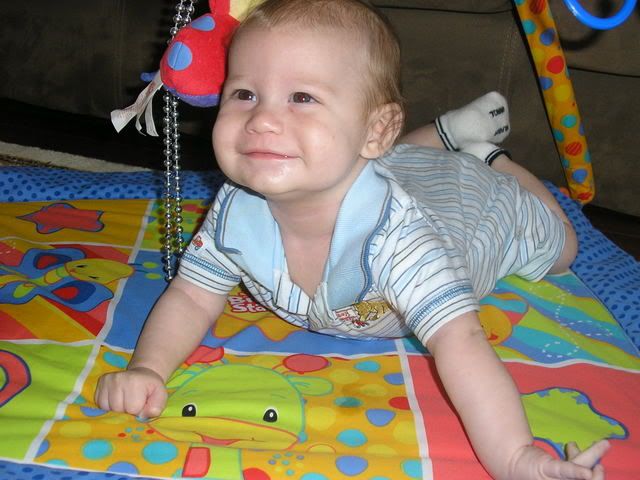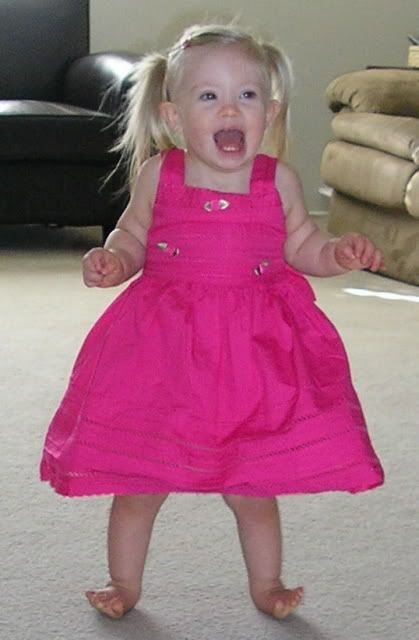Reader Comment Response: Toddler and Preschool Obsessions
 Last week, The Mom Crowd reader, Sharon M. commented on my article, “Making the Most Out of PlayTime with Your Baby.” Here’s what she wrote:
Last week, The Mom Crowd reader, Sharon M. commented on my article, “Making the Most Out of PlayTime with Your Baby.” Here’s what she wrote:
“What do you do when your toddler/ preschooler goes through the “obsession” phase? Like my son, for instance, has been on a musical instrument kick for the past several weeks and that’s ALL HE WANTS TO DO. The water bottle is his bassoon, the electric heaters are baritones and tubas, and one of our cords for our computer has become the french horn. Now I love music, and instruments, but all the time? No thank you! How do you divert him to play something else? How long will this last? I am tired of playing musical instruments!!!”
My first response is, “How wonderful!” You have a very imaginative child and I credit your parenting for helping to build that amazing creativity. You get a gold star in parenting from me! My second response is, “This too shall pass.” As a mother of a preschooler, you already know how children’s phases fly by way too fast, however when you’re in the middle of it, it can feel like an eternity! My third response is, “You are not alone!” I have watched countless toddlers preschoolers obsess on trains, G.I. Joe action figures, and ruby red slippers to name a few!
All of the research I have found suggests that toddler obsessions are very normal and very healthy. I found this mom of a child obsessed with trains who asks a very similar question to yours regarding her son’s obsession. The responses were overwhelmingly supportive to her son’s obsession with trains and emphasized how “normal” her son’s obsession is. I found this horse-maniac who needs a new word for OBSESSION! I also found this sticker-devotee, this box-fanatic, this button-pusher, and this bug-lover.
While it’s very normal for your child to become passionate over something, variety in your child’s play is also very important.
- You can work on teaching your son turn-taking to encourage more variety in his play. You can tell him, “Mommy really wants to play trains. Let’s play trains for 5 minutes and then you can choose what we play after we’re done.” Set a timer so he knows that once it beeps, he gets to choose the next activity.
- Encourage variety within his obsession. If all he wants to play is musical instruments, encourage him to play with musical instruments in different ways. He can color musical instruments (I found this handy site that has musical coloring pages for free), you can have him push his toy cars across the floor to the speed of the music playing, you can have him explore his dramatic play by using facial expressions and body movements that imitate the music playing, and you can get him new books that talk about new instruments he may not know. Even if he doesn’t want to leave the music world to play with other things, you can bring other things into his music world!
- Mix up his play by introducing new instruments to him. I couldn’t help but notice that he seems especially fond of brass instruments. If he is obsessing on brass instruments in particular, maybe working on expanding from brass to percussion or strings. While you’re not completely leaving the music world, you’re at least expanding from tubas and baritones!
- Arrange play dates for your son with children his age. Even if your son can get his friend as excited about music as he is, at least you will get a break from having to play it with him for a short time. Chances are the other child will have their own obsession, and it may rub off on your son, too!
I have said all that to say, encourage that passion and love for music as much as you can. Research is very clear on the power music has on children’s brain development, especially in the first six years of life. I come from a very musical family and play the piano, flute, and am learning the guitar. I hope my children have a passion for music and creative minds like your son.
Alright readers, the microphone is yours! What are your toddlers and preschoolers obsessed with? How long did the phases last? Any advise for dear Sharon who’s tired of playing musical instruments?
Share the fun: Email + Del.icio.us + Digg + Technorati

 Not too long ago, I posted
Not too long ago, I posted  Darah’s
Darah’s  The plastic covers the bottom of her foot (stopping right before her toes) and covers the backs and sides of her lower ankles. When she wears converse style tennis shoes, they are completely hidden. Darah walks so much better when she is wearing them. She has to wear socks under them at all times, and cannot wear them without shoes over them (because they are slippy), so the con to orthotics is the sweaty feet they produce during the summer time. She wears them whenever she leaves the house. I let her have barefoot play at home. She will not necessarily wear these for forever, however she may need some sort of shoe insert or arch support for the rest of her life due to the severity of her pronation. This equipment is covered by our insurance. They also come in very fun patterns!
The plastic covers the bottom of her foot (stopping right before her toes) and covers the backs and sides of her lower ankles. When she wears converse style tennis shoes, they are completely hidden. Darah walks so much better when she is wearing them. She has to wear socks under them at all times, and cannot wear them without shoes over them (because they are slippy), so the con to orthotics is the sweaty feet they produce during the summer time. She wears them whenever she leaves the house. I let her have barefoot play at home. She will not necessarily wear these for forever, however she may need some sort of shoe insert or arch support for the rest of her life due to the severity of her pronation. This equipment is covered by our insurance. They also come in very fun patterns!

